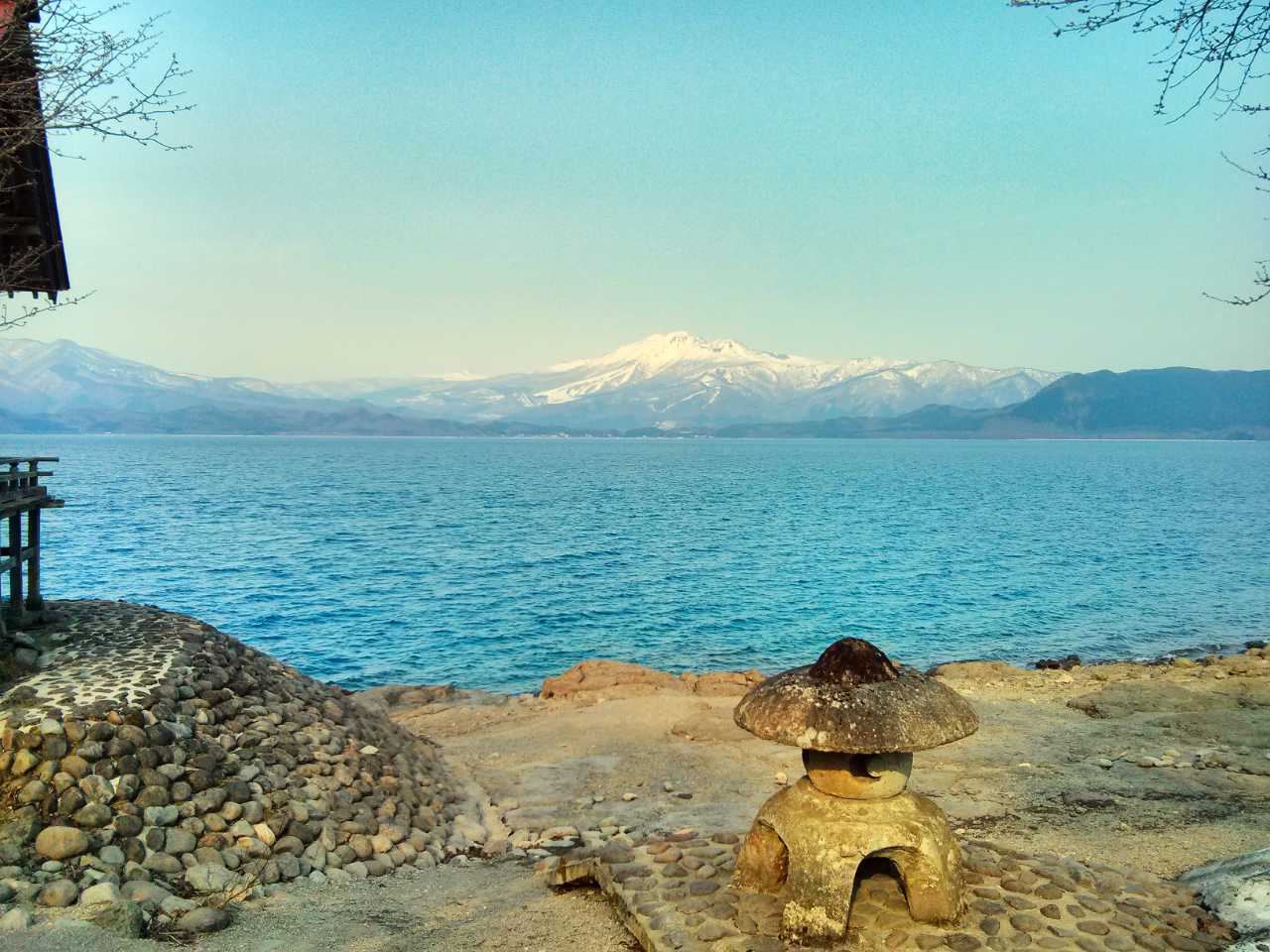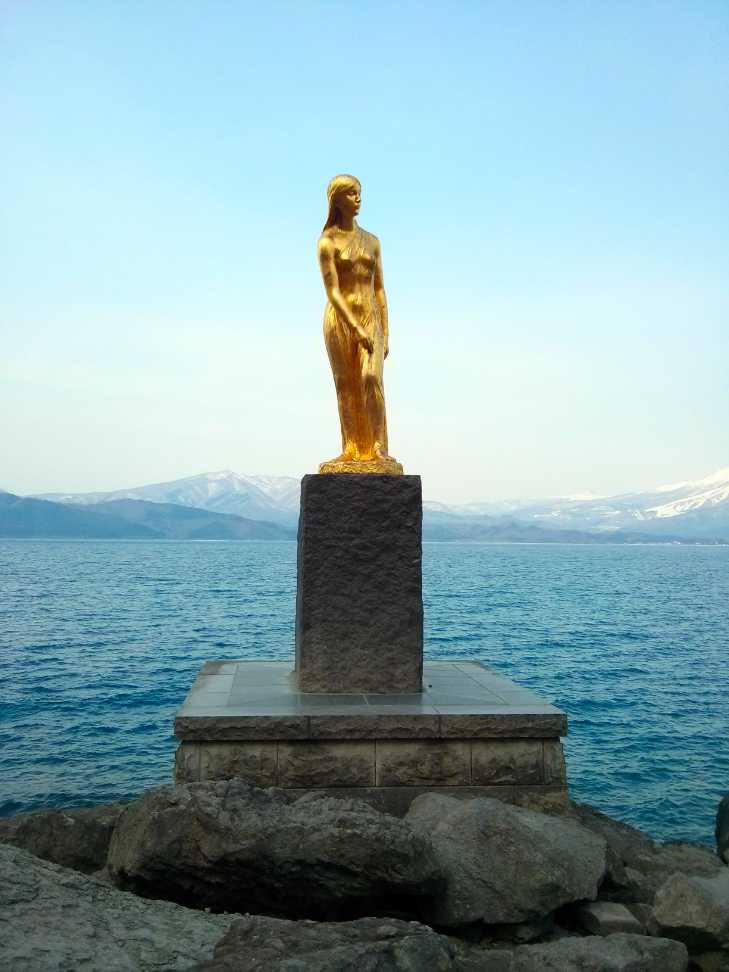From the Miocene Era to a Modern Hot Spring Resort: A Quick Dip into Lake Tazawa

Japan's deepest freshwater lake, Lake Tazawa, resides in Akita Prefecture in Semboku City within Towada-Hachimantai National Park. Known in Japanese as "Tazawako" (田沢湖), it stretches over 3.7 miles (6km) and plunges to a depth of 1388 feet (423m). Even though the surface is at an altitude of 817 feet (249m), its deepest point is over 572 feet (174m) below sea level. The lake never freezes, even in the middle of winter.
Encircling Lake Tazawa are mountain ridges between 984 and 2460 feet (300-750m) high. These ridges descend dramatically into steep slopes that plunge beneath the water surface, stretching roughly 1640 to 3600 feet (0.5-1km) offshore before finally flattening at a depth of approximately 1300 feet (400m). The underwater terrain is interrupted by two lava domes: a larger and deeper 3600 foot (1.1km) diameter dome whose top is 827 foot (252m) below the surface, and a smaller 980 foot (300m) diameter cone that is about 100 feet (30m) below the surface.
The lake used to be famous for its clear waters and was home to numerous species of fish, including Kunimasu (a kind of Salmon), Sockeye salmon, Japanese dace, Japanese trout, char, carp, catfish and eel. Due to human activity, only a few species of fish, including the Japanese dace, survive in the lake today.
Today, the Tazawa Lake area is a popular tourist destination known for hot spring resorts in the surrounding hills, an assortment of hotels and restaurants that can be found around the lake, and as a destination for outdoor activities.
Geologic History of Lake Tazawa
Sometime during the Middle Miocene era (approximately 16 to 11.6 million years ago), volcanic activity in the region of present-day Lake Tazawa began creating the rock that surrounds the lake today. About 2 million years ago, eruptions covered previous ones on what is now the east side of the lake.
Approximately 1.8 million years ago, a significant explosive eruption occurred. This eruption likely ejected a massive amount of magma, causing the magma chamber to collapse and form a large caldera. Shortly after this event, two large lava domes formed within the caldera, the oldest of which is about 1.73 million years old.
Eventually, the caldera began filling with precipitation and spring water flowing up from the lake's bottom, resulting in the formation of Lake Tazawa.
Note: I'm not a scientist and I'm not fluent in Japanese. I wrote the history above using research papers and other sources written in Japanese – there could be, and most likely are, errors in my interpretation or translation.While various pieces of evidence support Lake Tazawa's caldera origin, the exact timing and details of the eruption remain unclear due to the absence of the expected volume of ejecta from the caldera-forming eruption.
Acid Trip: Lake Tazawa's Unintended Chemistry Experiment and the Extinction of the Kunimasu
Lake Tazawa has been known since ancient times for its bounty, particularly the native Kunimasu, a species of salmon. This abundant aquatic life was made possible by the lake's clean water.
In 1909, during the Meiji period, a scholar by the name of Akamaro Tanaka measured the depth of Lake Tazawa for the first time. He used a hemp rope and a weight to record a depth of about 1300 feet (397m), confirming what locals had long suspected about the lake's depth.
A major change in the lake's history occurred in 1940 with the construction of a hydroelectric power plant. To supplement the water used for power generation, the Tamagawa River was connected to the lake on January 20, 1940. This, however, resulted in a large amount of highly acidic water entering Lake Tazawa, causing significant environmental impacts.
The introduction of acidic water caused a rapid degradation of the power plant's facilities and acidified the irrigation water, rendering it unsuitable for agriculture. Most distressingly, the Kunimasu vanished and was presumed extinct as a result of the deteriorated water conditions.

Efforts to neutralize the acidity using limestone began in 1972. By 1991, the Tamagawa Acidic Water Neutralization Plant began full-scale operations. While this led to some improvements, with the surface layer of the lake becoming gradually neutral, the water remains acidic to this day.
In a surprising twist, a surviving Kunimasu was discovered in 2010 in Lake Saiko, Yamanashi Prefecture. This might be linked to a 1935 experiment that distributed Kunimasu eggs to various lakes, including Lake Saiko. Despite this glimmer of hope, the future of the Kunimasu in Lake Tazawa remains uncertain because the water is still fairly acidic. Authorities in Semboku City, however, remain committed to reviving the wild Kunimasu population in the lake.
The Legend of Tatsuko (or Tatsuko's Thirst for Beauty)
The legend of Tatsuko is a popular folktale from Japan and is centered around Lake Tazawa. Here is a summary of the story:
As the years passed, Tatsuko began to notice signs of aging, which alarmed her. She grew increasingly desperate to preserve her beauty and decided to seek the spring from which the mountain spring originated, hoping it would grant her eternal youth and beauty. She traveled deep into the mountains in search of this magical spring.
Finally, after a long journey, she found the spring she was searching for. Driven by her desire for eternal beauty, she drank from the spring non-stop, without paying attention to the deities and spirits around her.
However, in her greed, she offended the gods. They punished Tatsuko by transforming her into a dragon. In her new form, she had to live in the depths of Lake Tazawa, thus condemning her to an eternity of loneliness, despite her eternal beauty.
Based on this legend, in 1968 the sculptor Yasutake Funakoshi built a statue of Tatsuko on the shore of the lake where it is said that Tatsuko drank the water that caused her to become a dragon.

Things to Do at Lake Tazawa
Lake Tazawa is popular with tourists due to its natural beauty, attracting outdoor enthusiasts for activities like boating, fishing, and swimming. The lake area's numerous hot spring resorts entice relaxation and wellness seekers. The region's culture and history is on display in the small, traditional villages scattered around the lake.
Sightseeing
- Visit Kakunodate, a traditional village about 9 miles (14.5km) away, known for its samurai history and traditional architecture. The town has preserved its samurai district which has many old samurai houses that are open to the public. The town also has many museums and art galleries that showcase the history and culture of the area.
- Visit the Statue of Tatsuko.
- Visit the Kansagu Ukiki Shrine which is a beautiful shrine located near the lake.
- See the Great Kannon statue at Lake Tazawako.
- Take a sightseeing boat tour.
- Visit the Gozanoishi Shrine which is a beautiful shrine located on the north side of the lake.
- Go to the Akita Art Village and see a show at the Warabi-za theater and drink a local beer at Tazawako Brewery.
Outdoor Activities
- Hike trails and enjoy scenic views at Katamaeyama Forest Park.
- Climb Mount Akita-Komagatake, the tallest mountain in Akita prefecture.
- Go on a kayak tour or go whitewater rafting
- Go fishing.
- Go skiing at the Tazawako Ski Resort with views overlooking Lake Tazawa.
Hot Springs and Onsen
- Visit the Mizusawa onsen directly below the Tazawako Ski Resort.
- Visit the Tazawako Kogen Onsen Village, which is a little more than a mile (2km) up the road from the Tazawako Ski Resort.
- Stay at the Komagatake Grand Hotel and bathe in the hotel's hot spring.
